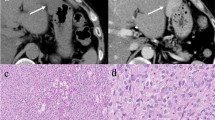Abstract
Cancer of the upper gastrointestinal tract includes mainly adenocarcinoma and squamous cell carcinoma of the esophagus, gastric adenocarcinoma, early gastric cancer. There are rarer malignancies such as MALT lymphoma (mucosa-associated lymphoid tissue) and GISTs (gastrointestinal stromal tumors). Prognosis and therapeutic algorithm depends largely on staging which entails apart from clinical evaluation, endoscopic and radiological tests. The main consideration for the clinician with regards to therapy of early esophageal or gastric cancer is primarily to decide whether to proceed with endoscopic or surgical resection of the tumor. Another important clinical decision for patients with upper gastrointestinal malignancy is whether chemotherapy should precede tumor resection (neoadjuvant treatment). Treatment of MALT lymphoma always comprises Helicobacter Pylori eradication should it be present. As staging tools become more sophisticated (CT, MRI and PET scanners, Endoscopic ultrasound probes and high definition endoscopes) a more appropriate selection of patients for minimally invasive tumor resection techniques (endoscopic rather than surgical) is feasible.
Access provided by Autonomous University of Puebla. Download chapter PDF
Similar content being viewed by others
Keywords
1 Introduction
There are 2 different histological types of esophageal carcinoma (squamous cell- and adenocarcinoma) with different characteristics such as location (primarily upper esophagus for SCC and lower for adenocarcinoma) and risk factors (alcohol and smoking for SCC vs. gastroesophageal reflux and Barretts esophagus for adenocarcinoma) [1]. As adenocarcinoma is the commonest, discussion is referring mainly to this particular histological type [2].
Esophageal adenocarcinoma presents with solid food dysphagia and weight loss and is diagnosed with upper gastrointestinal endoscopy and biopsies.
Both prognosis, which unfortunately remains poor [3] and therapeutic algorithm (neoadjuvant therapy before surgery, endoscopic resection vs. surgery) depends on staging.
With regards to gastric cancer, the majority of patients has limited symptoms (weight loss and abdominal pain) or is completely asymptomatic and present with advanced, metastatic and thus incurable disease.
The diagnosis is made with upper gastrointestinal endoscopy and biopsies where at least 7 biopsies are thought to be needed to increase diagnostic accuracy [4]. In a particular type of diffuse-gastric cancer (linitis plastica) apart from sufficient number, a specific endoscopic biopsy technique is advocated to ensure adequate tissue sample (strip and bite biopsy technique). In these cases, Barium study is a useful diagnostic tool with the characteristic ″leather flask" appearance of the stomach due to poor distensibility.
MALT is one of the most common histologic types of gastric lymphoma which is diagnosed with endoscopy and biopsies.
Staging investigations include CT chest, abdomen and pelvis (distant disease-M stage) and EUS (depth of invasion-perigastric lymph nodes-T and N stage).
GISTs are stromal or mesenchymal tumors that can present as subepithelial masses anywhere in the gastrointestinal tract (more often in the stomach rather than the esophagus where leiomyomas are the commonest) including rarely mesentery, omentum and peritoneum. The majority are sporadic with a mutation in the KIT or much less frequently in the PDGFRA gene [5].
They affect predominantly middle-aged or older individuals and typically present with no or nonspecific symptoms (bloating, early satiety) unless they are complicated by ulceration, bleeding or intestinal obstruction.
References
Engel LS, Chow WH, Vaughan TL, et al (2003) Population attributable risks of esophageal and gastric cancers. J Natl Cancer Inst 95:1404–1413
Jemal A, Bray F, Center MM et al (2011) Global cancer statistics. Cancer J Clin 61:69–90
Daly JM, Karnell LH, Menck HR (1996) National cancer data base report on esophageal carcinoma. Cancer 78:1820–1828
Graham DY, Schwartz JT, Cain GD et al (1982) Prospective evaluation of biopsy number in the diagnosis of esophageal and gastric carcinoma. Gastroenterology 82:228–231
Medeiros F, Corless CL, Duensing A et al (2004) KIT-negative gastrointestinal stromal tumors: proof of concept and therapeutic implications. Am J Surg Pathol 28:889–894
Author information
Authors and Affiliations
Corresponding author
Editor information
Editors and Affiliations
Rights and permissions
Copyright information
© 2014 Springer-Verlag Italia
About this chapter
Cite this chapter
Danielides, I.K., Nikolopoulos, A.N. (2014). Esophageal and Gastric Tumors Where the Clinician Requires Imaging. In: Gouliamos, A., Andreou, J., Kosmidis, P. (eds) Imaging in Clinical Oncology. Springer, Milano. https://doi.org/10.1007/978-88-470-5385-4_50
Download citation
DOI: https://doi.org/10.1007/978-88-470-5385-4_50
Published:
Publisher Name: Springer, Milano
Print ISBN: 978-88-470-5384-7
Online ISBN: 978-88-470-5385-4
eBook Packages: MedicineMedicine (R0)




